

Nagasaki, historically a hub for international exchange, flourished through trade and shipbuilding. Though devastated by an atomic bomb in 1945, it has since become a city advocating for nuclear disarmament and lasting world peace as an international peace culture city
Video by Nagasaki City, © Nagasaki City.
Sasebo City, located in northern Nagasaki Prefecture, is known for its rich natural beauty, including Saikai National Park's Kujukushima Islands. Once a naval port, it now hosts a U.S. Navy base and is also a popular tourist destination, home to Huis Ten Bosch, one of Japan's largest theme parks
Video by Sasebo-Ojika Umikazenokuni Kankouken, © Sasebo-Ojika Umikazenokuni Kankouken.
Hirado City, at the northwestern tip of Kyushu, comprises Hirado Island and about 40 smaller islands. Once a thriving trade port during the Age of Exploration, it showcases a unique blend of Japanese and foreign cultures and is where Christianity was first introduced to Nagasaki
Video by Hirado Tourist Association, © Hirado Tourist Association.
Unzen City, located on the western side of the scenic Shimabara Peninsula, is surrounded by Mount Fugen, the Ariake Sea, and Tachibana Bay. Famous for its hot springs and cuisine, it features Unzen-Amakusa National Park, showcasing stunning seasonal views from Nita Pass Observatory
Video by Ministry of Internal Affairs and Communication, © Ministry of Internal Affairs and Communication.
Shimabara City is known for Shimabara Castle, built in 1618 by Matsukura Shigemasa. Remnants of the castle town, including samurai residences, still exist. Renowned as the "City of Water," it features springs from the Unzen Mountain Range, celebrated for their purity and natural beauty
Video by Shimabara Tourism Bureau, © Shimabara Tourism Bureau.
Minami-Shimabara City enjoys a mild climate and is known for its agriculture and fishing. It has a rich Christian heritage, with sites like the ruins of Hara Castle and Hinoe Castle, which are part of the UNESCO-listed "Hidden Christian Sites in the Nagasaki Region"
Video by Minamishimabara City Tourist Association, © Minamishimabara City Tourist Association.
Shinkamigoto Town, in the northern Goto Islands at Kyushu's westernmost point, was formed on August 1, 2004, from five towns. It served as Japan's last port for Kentoshi ships to China during the Nara and Heian periods and became a refuge for Christians in the Edo period
Video by Shinkamigoto Town, © Shinkamigoto Town.
Goto City, located 100 km west of Nagasaki Port at Kyushu's westernmost point, includes 10 inhabited and 53 uninhabited islands. It showcases rich culture and preserves Christian heritage in Hisaka and Egami on Naru Island, part of the UNESCO "Hidden Christian Sites in the Nagasaki Region"
Video by Goto City Tourism Association, © Goto City Tourism Association.
Iki Island, once a trading hub of the ancient kingdom of Ikikoku, has a rich history documented in texts like the Records of the Three Kingdoms and Japan’s Kojiki. Despite its small size, about 17 km north to south and 15 km east to west, it features many historical sites
Video by Iki City, © Iki City.
Tsushima, mostly covered by 89% mountains and forests, features beautiful natural landscapes, including ancient forests on Mount Taterayama and Mount Shiratake, both national monuments. Its proximity to the Korean Peninsula made it a key entry point for various cultural influences in Japan
Video by Tsushima Local Promotion Assosiation, © Tsushima Local Promotion Assosiation.
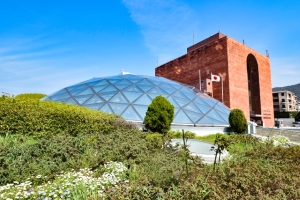
Nagasaki, the second city in the world to be atomic-bombed after Hiroshima, hosts a museum in its city center dedicated to its tragic history and recovery, advocating for peace. Exhibits include a deformed iron water tank, survivor accounts, and displays on post-war anti-war movements
View on Google Maps
Located on the site of the former Nagasaki Magistrate's Office from the Edo period, the Nagasaki Museum of History and Culture uniquely blends historical reconstruction with modern museum functions. It houses valuable documents and artifacts related to Nagasaki’s history, focusing on its international exchanges
Photo by Nagasaki City, © Nagasaki City.

During Japan's isolation period (1639–1854), Dejima served as the sole gateway for trade and cultural exchange with the West, playing a crucial role in Japan's modernization. Though land reclamation altered its original fan shape, efforts to restore Dejima are ongoing
Photo by Nagasaki City, © Nagasaki City.
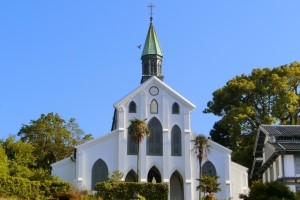
Oura Cathedral, built in Nagasaki in 1864, is Japan's oldest existing church and features Gothic architecture with stained glass. It became a historic site for discovering hidden Christians. A UNESCO World Heritage site, it was restored after atomic bomb damage and houses a Christian museum
View on Google MapsGlover Garden is a prominent tourist attraction in Nagasaki, featuring three Western-style mansions, including the former Glover residence, as well as six historic buildings relocated and restored from various locations within Nagasaki City from the Meiji period
Video by Nagasaki Minamiyamate Glover Partners, © Nagasaki Minamiyamate Glover Partners.
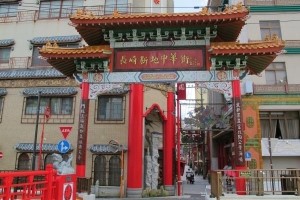
Nagasaki Shinchi Chinatown, alongside Yokohama and Kobe, was established in the mid-Edo period by reclaiming land for trade warehouses. Its crossroad, approximately 250 meters long, features cobblestones from Fujian Province, and now hosts around 40 restaurants and shops
Photo by Nagasaki City, © Nagasaki City.
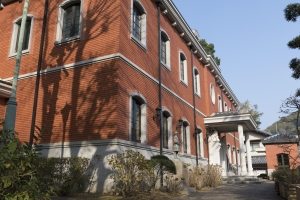
Siebold, a German physician and naturalist, arrived in Japan in 1823 as a doctor at the Dutch Trading Post in Dejima. He introduced Western medicine and natural sciences while studying Japan's nature and culture. The Siebold Memorial Museum, next to his former residence, honors his achievements
Photo by Nagasaki City, © Nagasaki City.
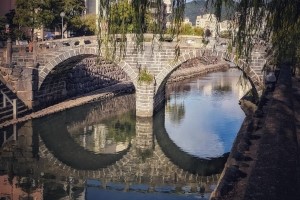
The Spectacles Bridge, built in 1634 by Kofukuji's Zen master Mokusu Nyojo, is named for its reflection resembling glasses. It is considered one of Japan's three famous bridges, alongside Nihombashi (Google Maps) and Kintaikyo (Google Maps). Though partially destroyed in the 1982 Nagasaki Flood, it was restored the next year
Photo by Nagasaki City, © Nagasaki City.
Founded in 1983 as a theme park, Holland Village was created by a Nagasaki-born businessman to recreate Dejima, the historical gateway between Japan and the Netherlands. The project evolved, and in 1992, Huis Ten Bosch ("House in the Forest"), an eco-friendly futuristic city, was born and continues to develop today
Video by Sasebo Tourism and Convention Association, © Sasebo Tourism and Convention Association.
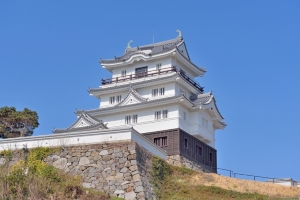
Hirado Castle, or Kameoka Castle, overlooks Hirado Strait. Built by the 30th Matsura lord from 1704 to 1718, it was abandoned after the Meiji castle abolishment. The current three-tiered, five-story main keep was restored in 1962
View on Google Maps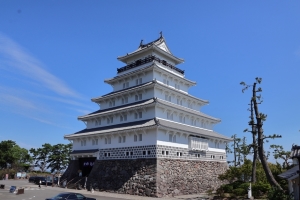
Shimabara Castle, built by Matsukura Shigemasa starting in 1618, was abandoned in 1874 but restored in 1964. Now, it hosts a Christian History Museum, Seibo Memorial Museum, and Folk Museum in its various turrets
View on Google MapsHashima, about 40 minutes from Nagasaki Port by boat, is a man-made island built around an undersea coal mine. Its resemblance to the battleship Tosa earned it the nickname "Battleship Island." In 1960, it housed around 5,300 people, Japan’s most densely populated area
Video by Nagasaki Prefecture Tourism Association, © Nagasaki Prefecture Tourism Association.
The property, "Hidden Christian Sites in the Nagasaki Region," reflects the history of communities that secretly maintained Christianity during Japan's 17th to 19th-century ban. Its 12 components demonstrate the survival and unique traditions of Hidden Christians during this period
Video by Nagasaki Prefecture, © Nagasaki Prefecture.
Unzen-Amakusa National Park offers stunning water and land panoramas, featuring the volcanic landscape of Mount Unzen, with its hot springs, and the scenic Amakusa islands. The Unzen area, with over 20 mountains, provides diverse views of land and sea, while Amakusa’s 120 islands showcase bays, sea cliffs, and coral-filled waters
Video by Ministry of the Environment, © Ministry of the Environment.
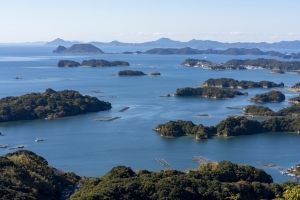
Saikai National Park, designated in 1955, covers northwest Nagasaki and includes Hirado, Goto, and Kujukushima, a group of nearly 400 islands in Sasebo. It's known for its maritime landscapes, including the Wakamatsu Strait's island clusters
View on Google Maps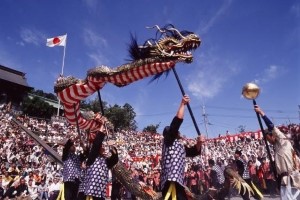
The Nagasaki Kunchi is the annual autumn festival of Suwa Shrine, held from October 7 for three days. Originating in 1634, it features performances influenced by foreign cultures and was designated as an Important Intangible Folk Cultural Property in 1979
Photo by Nagasaki City, © Nagasaki City.
The Nagasaki Lantern Festival began in 1994, expanding the traditional Chinese New Year celebration held by the local Chinatown. During the festival, vibrant lanterns decorate the city, especially Chinatown, creating a colorful spectacle along with various Chinese-themed events
Video by Nagasaki City, © Nagasaki City.
Nagasaki, a historical crossroads of cultures, showcases a rich blend of culinary traditions influenced by Japanese, Chinese, and Western cuisines. Shippoku cuisine, a festive banquet that begins with "O-hire wo douzo" (Please enjoy the soup), features seasonal dishes like sashimi, Nagasaki-style tempura, and braised pork served on elegant round lacquered tables. Another local favorite is Champon, a hearty noodle soup filled with seafood, vegetables, and pork, reflecting the city’s Chinese heritage. These dishes illustrate the vibrant cultural fusion that defines Nagasaki’s food traditions.
While many countries preserve diverse regional cuisines, Japan also offers its unique culinary journey. This video highlights select dishes, showcasing distinct local specialties and historical influences in the region
Video by Ministry of Agriculture, Forestry and Fisheries, © Ministry of Agriculture, Forestry and Fisheries.
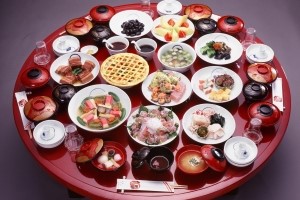
Shippoku cuisine originated from Chinese residents in Nagasaki to entertain Japanese and Western guests. Notable establishments include the upscale Kagetsu (Google Maps) and Ichiriki (Google Maps), along with Yossou (Google Maps), the first to serve chawanmushi (savory egg custard), and family restaurant Hamakatsu (Google Maps)
Photo by Nagasaki City, © Nagasaki City.
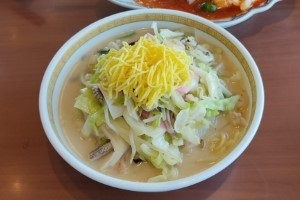
Champon originated from the Fujian dish "Tang Ni Si Mian," a simple noodle soup with pork, mushrooms, bamboo shoots, and green onions. Chen Heijun, founder of Shikairo (Google Maps), adapted it with thicker broth, more ingredients, and unique noodles, spreading from Nagasaki throughout Japan

Castella is a sponge cake made from eggs, sugar, syrup, and flour, believed to have been introduced to Japan by Portuguese traders and missionaries in the 16th century. While now produced nationwide, Nagasaki's Fukusaya, Bunmeido, and Shooken are especially renowned
Photo by Nagasaki City, © Nagasaki City.
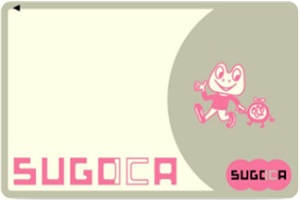
JR Kyushu, part of Japan Railways, offers the SUGOCA card, a rechargeable smart card for transportation and shopping, similar to Suica. It simplifies fare payment on trains, buses, and at stores nationwide. However, it's region-specific and cannot be used for inter-JR region travel, except for special Shinkansen deals via Express Reservations

Designed for exploring Kyushu, this pass offers various options tailored to Northern Kyushu, Southern Kyushu, or the entire region. Enjoy the flexibility of choosing seats on local trains, limited express trains, and even the Shinkansen
Nagasaki Electric Tramway Co., Ltd. (Nagaden), operates tram services in Nagasaki City, providing connections between key areas such as the Nagasaki Station and various attractions, including Oura Cathedral, Shinchi Chinatown, Shianbashi and the Peace Park
Route Map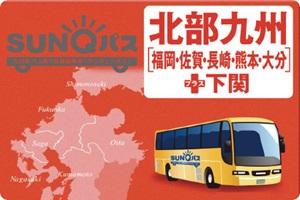
This pass offers unlimited rides on almost all Express Buses and local buses in Kyushu's seven prefectures, as well as in the Shimonoseki and Nagato area (Yamaguchi), plus access to select ferries
Nexco West, one of Japan's three expressway management companies, offers international car renters unlimited access to the Kyushu Expressway for a flat fee, covering most sections, with some exclusions
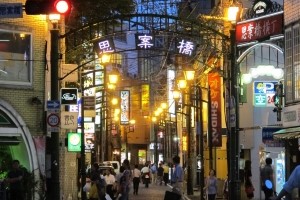
Shianbashi is Nagasaki's lively bar and restaurant district, bustling with diverse stores and excellent transportation access. Historically, it was a bridge connecting to the Maruyama entertainment district in the 1600s. Although the bridge is gone, remnants of its railings still exist
View on Google MapsAt Nagasaki Bio Park, animals are not merely "exhibited" as in typical zoos but live in settings that mimic their natural habitats. Visitors can gain a deeper understanding of the significance and value of life and nature
Video by Nagasaki Bio Park, © Nagasaki Bio Park.
Nagasaki Prefecture, part of the Kyushu Region of Japan, has Nagasaki City as its capital and is embraced by the sea, dotted with 1,479 islands including the Gotō Islands, Iki, and Tsushima. It has long been a vibrant center for maritime trade and cultural exchange, acting historically as a key link between Japan and the Asian mainland. During Japan’s isolation (1639–1854), Dejima in Nagasaki served as the sole gateway for Western trade and ideas. Although devastated by the atomic bomb in 1945, Nagasaki has remarkably rebuilt itself, embodying peace and rich cultural diversity.
Video by Nagasaki Prefecture Tourism Association, © Nagasaki Prefecture Tourism Association.